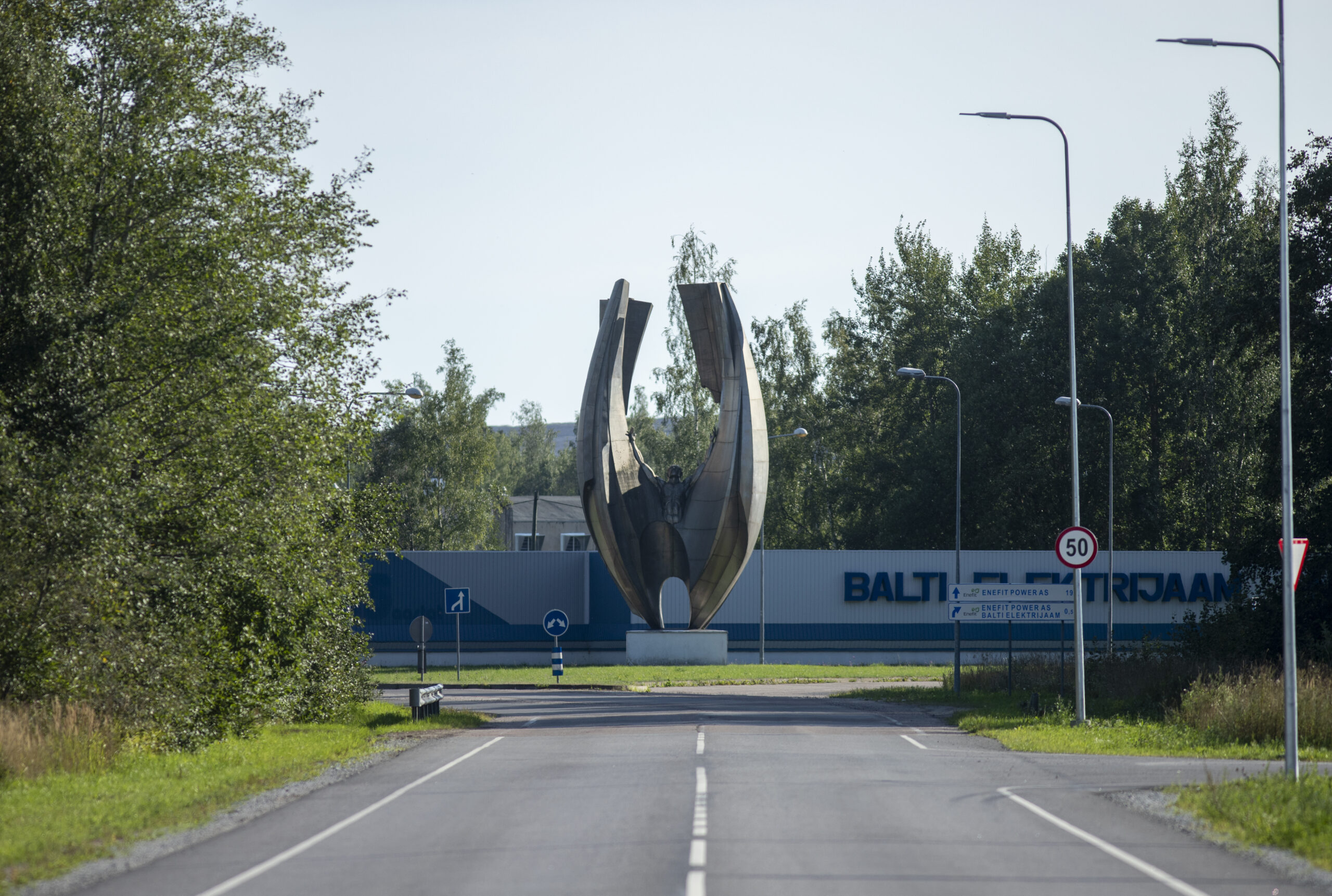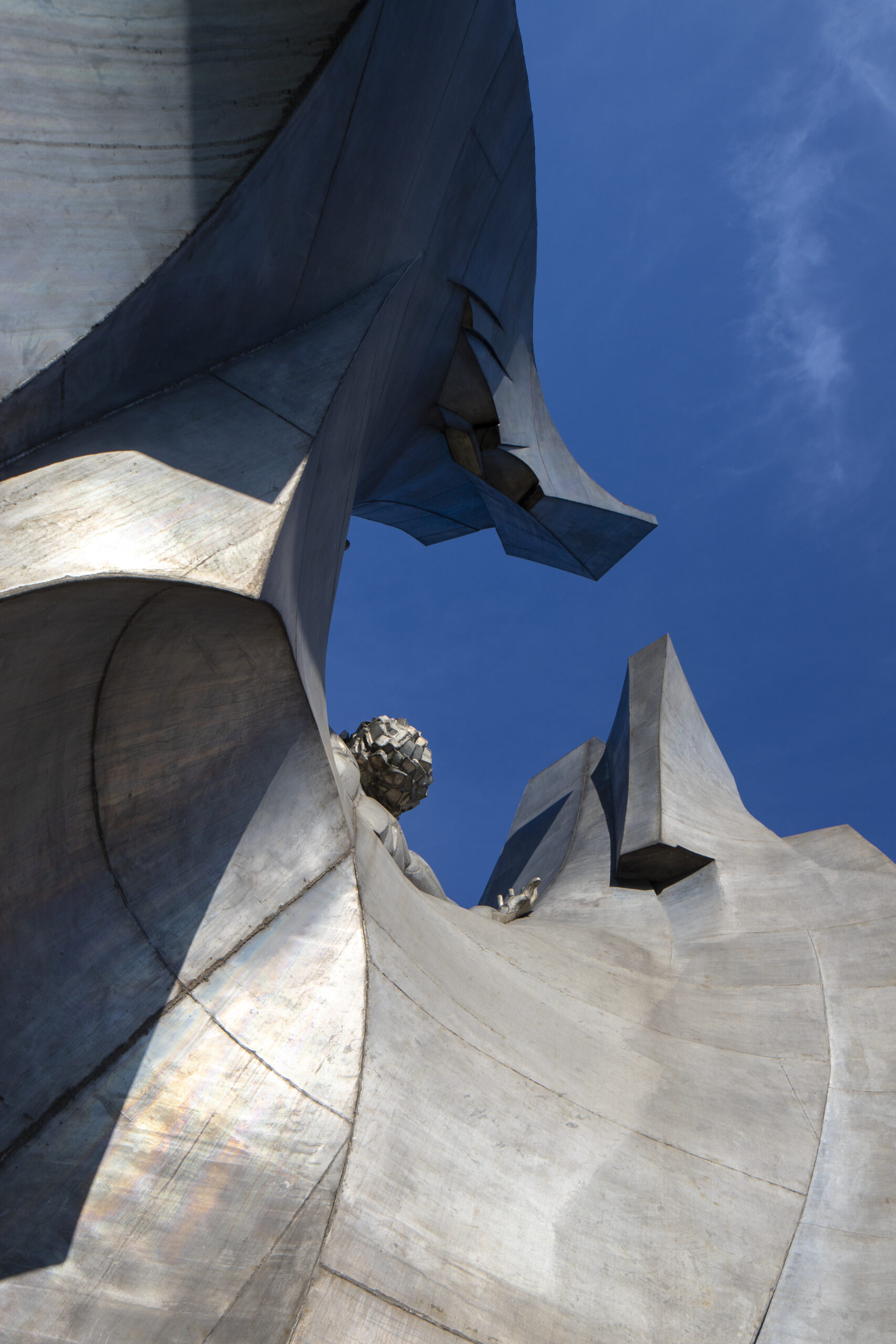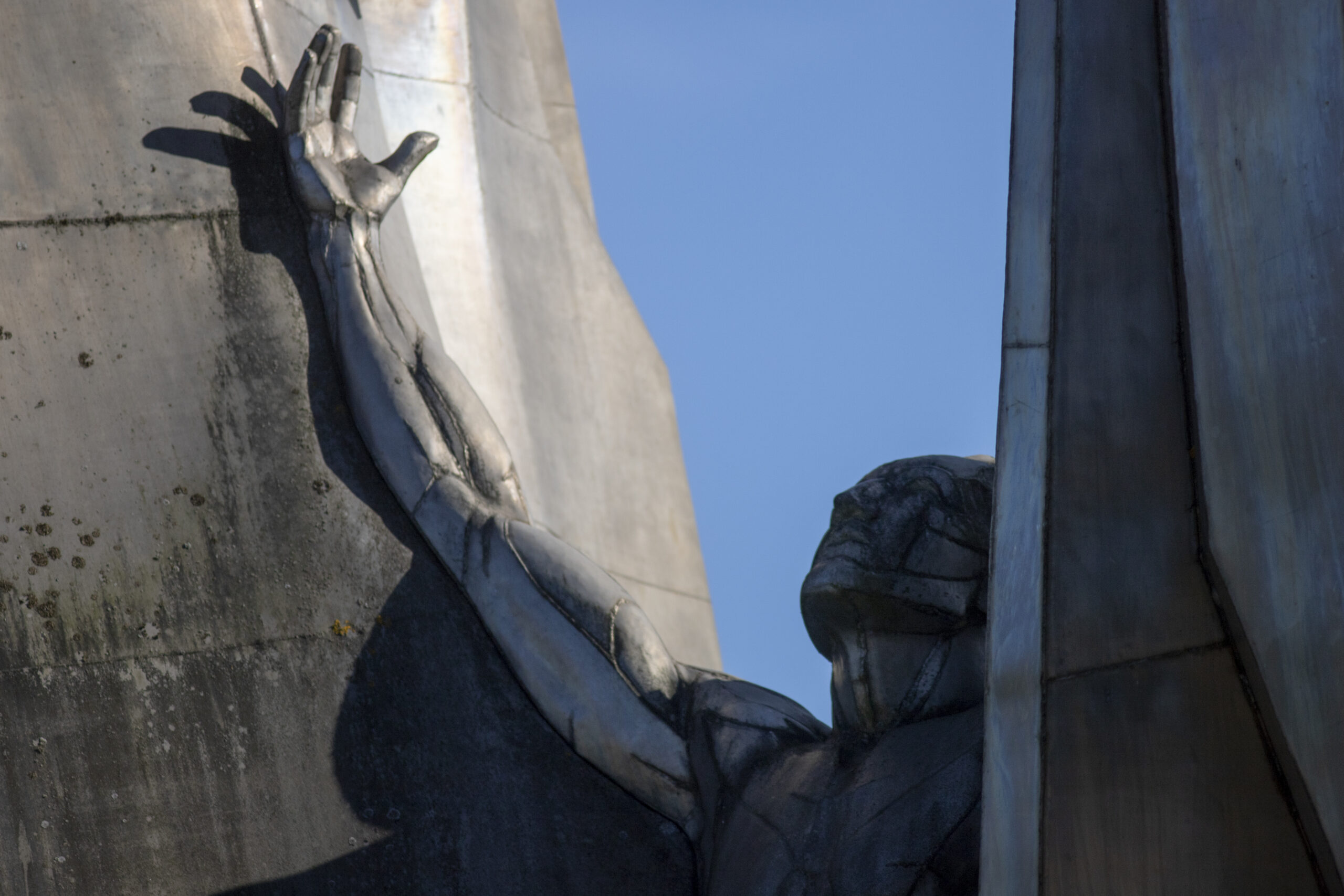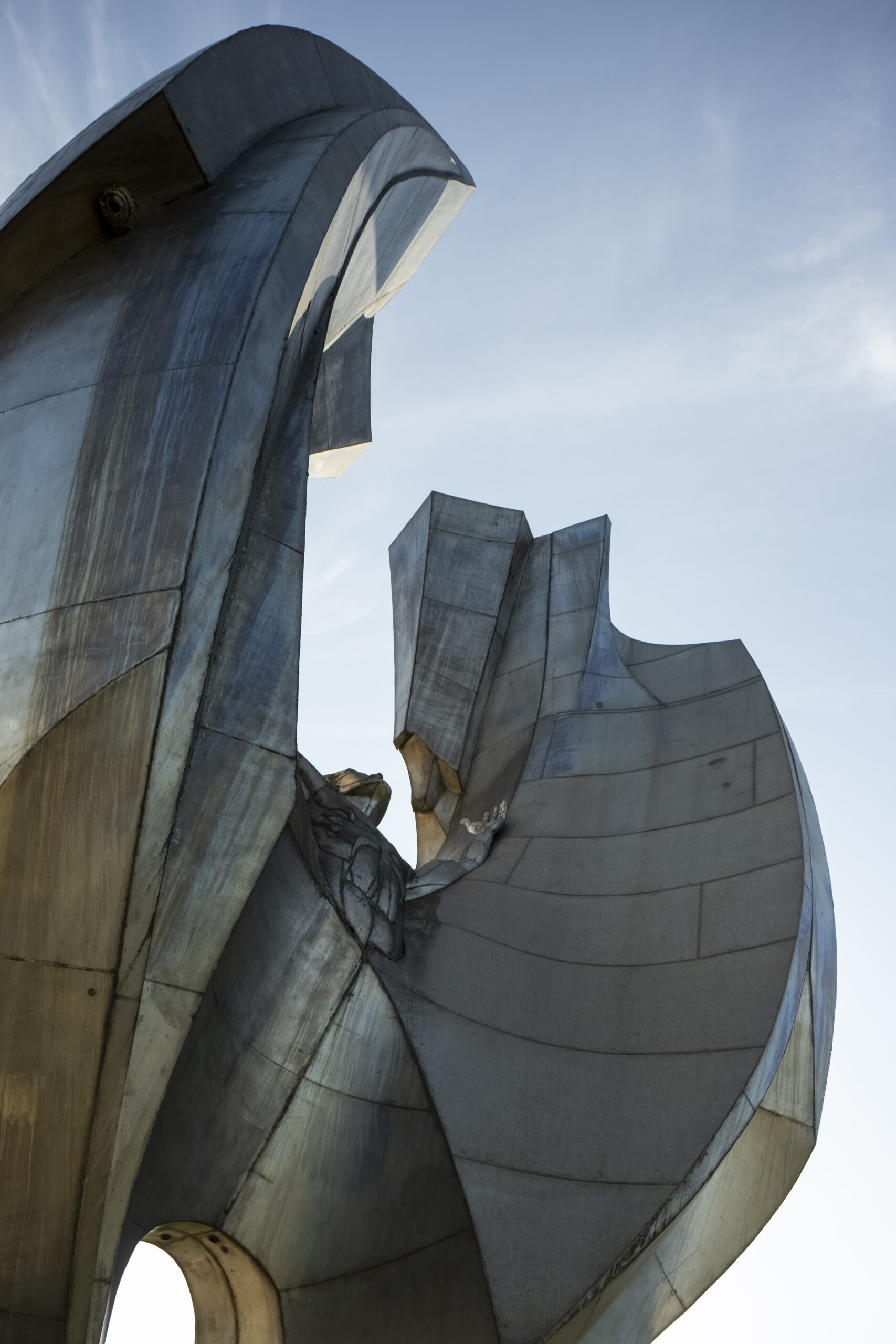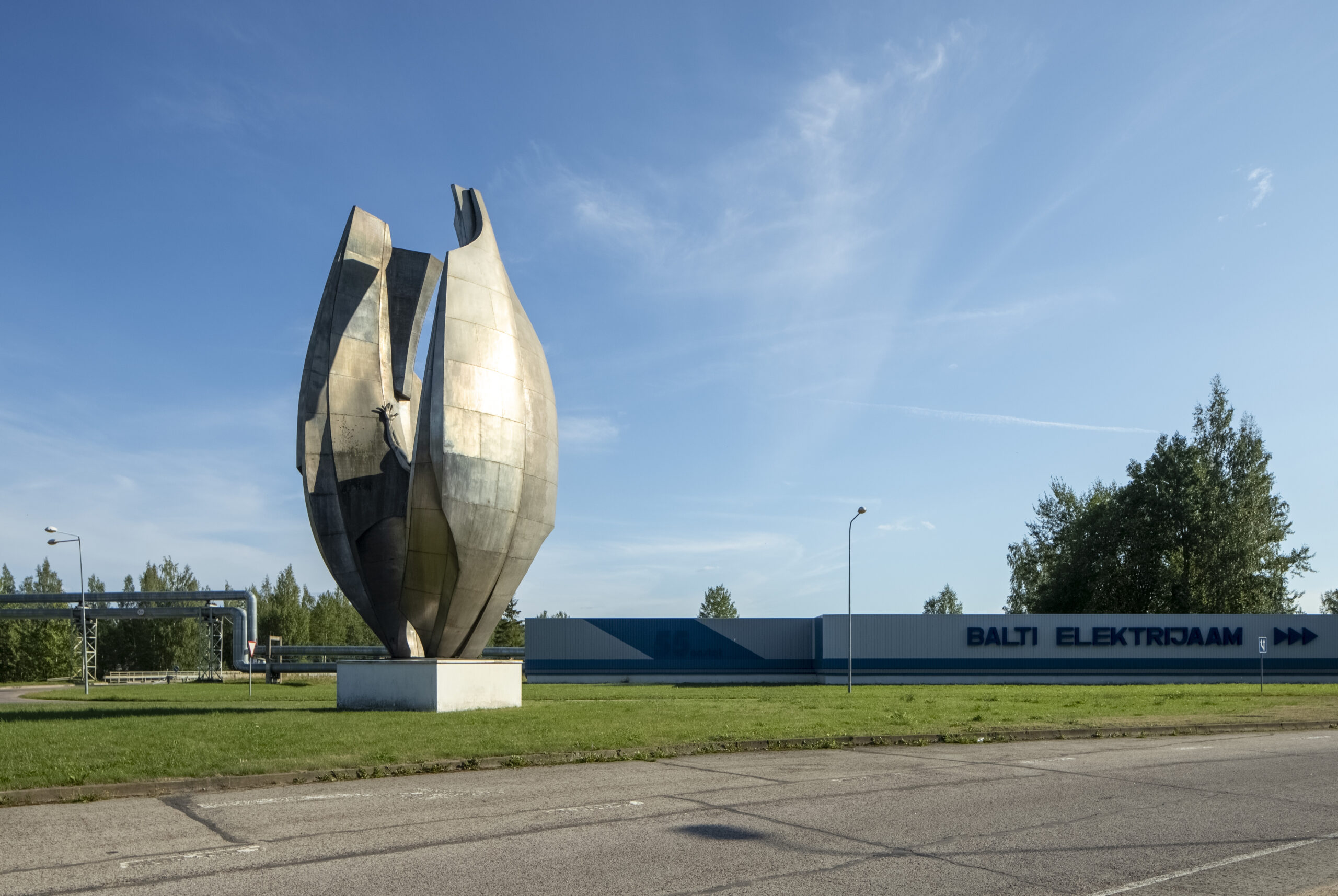Monument Energia (“Energy”)
Year of completion: 1982
Address: Ida-Viru County, Narva, Elektrijaama tee 59C
Author Riho Kuld
Metal
Not listed as a cultural monument
“Communism is Soviet power plus the electrification of the whole country.” – a slogan heard by practically every citizen of the Soviet Union, even those who did not have electricity in their homes during their lifetime. This triumphant statement declared by Vladimir Lenin in the beginning of the 20th century became one of the most essential pillars of the creation of a workers’ state, as the generation and use of electricity was one of the guarantors of a developing industrial society, and the device was also employed in an ideological context. Although electricity was already generated in Estonia under the Russian Empire, the period of large-scale generation began here during the Soviet Era. Two gigantic oil-shale fired power plants were constructed near Narva, and electrical energy generation became one of Soviet Estonia’s most significant industries. The first of the two plants, Balti Power Plant, reached full capacity in 1966 and became one of the symbols of Soviet Estonia’s industry. The plant’s turbine and furnace department with its six chimneys was an important part of the visual image of post-war Narva. Narva turned into a city of energetics workers, energy economics into a cultic industry branch aside textile production.
The 1970s brought with it the idea to depict energetics as an industry branch in the monumental art of Narva. Balti Power Plant, the most powerful oil-shale power plant in the world at the time, was the most suitable place for the monument, thanks to its glorious front with a broad cooling water canal. Considering the proportions of the structures around it, the monument had to be gigantic and salient as well. Thus, the piece was placed next to the plant’s driveway leading up to the main gate, and began to illustrate the plant’s business card. Initially, the plan was to complete it for the Moscow Olympics in 1980, but due to technical difficulties, it was finished in 1982. The sculpture with its powerful and dynamic form depicts a winged supreme human who has ripped himself from Earth’s gravitational pull and charged into space. The massive, curved wings give the monument an energetic form; the metal sheets that cover the sculpture shine and reflect light in the sun, giving the monument a progressive and even glamorous aura.
The monument is Narva’s biggest and aesthetically most high-quality monumental art piece, generally unseen by the town’s visitors due to its secluded location. It is in a technically adequate state and continues to greet everyone entering or passing the now largely shut down power plant.
Madis Tuuder







